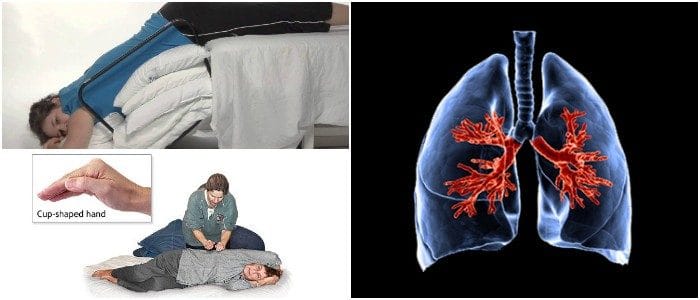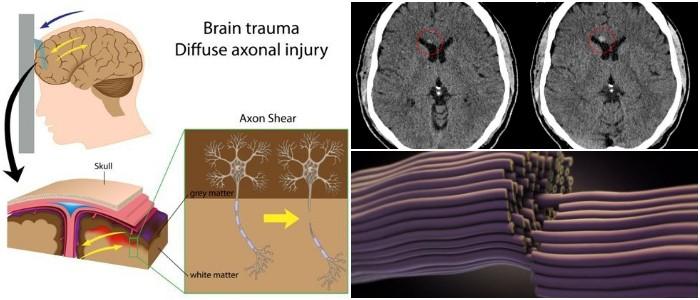Pulmonary Toilet refers to methods used for the cleansing of the trachea and the bronchial tree.
Usually known as Pulmonary Hygiene or Broncho-pulmonary Hygiene, Pulmonary Toilet is a set of methods to clear mucus and secretions from the trachea and bronchial tree.
The Trachea is the tube-like cartilaginous passageway or system of tubes that carries air and connects the larynx (also known as voice box) to the bronchi of the lungs.
While the Bronchial Tree refers to the branching system of the trachea, the bronchi, and other structures that conduct or carry air.
The primary goal of the Pulmonary Toilet methods is keeping the lungs healthy and preventing the development of conditions such as Atelectasis (impaired expansion of the lung).
In fact, the excess of secretions is the typical cause of several respiratory infections.
Pulmonary Hygiene seeks to clean these pulmonary airways using the mucociliary clearance system and the ability to expel secretions from the lungs by coughing.
However, these techniques can also help patients who already suffer from a pulmonary condition.
Pulmonary Hygiene methods are remarkably useful when dealing with diseases such as Chronic Obstructive Pulmonary Disease (COPD), Pneumonia, Cystic fibrosis, and even Bronchiectasis.
People should also remember that these techniques don’t cure some of these diseases, they only alleviate the symptoms.
Techniques of Pulmonary Hygiene
Broncho-pulmonary Hygiene involves the several methods listed here below:
Deep Breathing: Patients should breathe deeply and then make an effort to expel mucus and secretions accumulated in the pulmonary airways by coughing.
People with COPD should rely on the instructions of a physical therapist to perform breathing techniques effectively.
Incentive Spirometer: it refers to a medical device meant to facilitate a sustained slow deep breath. It helps patients to exercise their lungs.
The proper use of this device can help people to keep their lungs clean and prevent pulmonary infections or other similar conditions.
Postural drainage: it is a technique that uses the gravity to drain mucus and secretions out of the lungs by changing positions.
Each position can drain different areas of the lungs, so the mucus gets expelled from the mouth.
Medical experts recommend it treat several conditions and even chronic diseases such as Bronchiectasis (damaged bronchial tubes).
Some physical therapist, depending on the case, combine this method with the use of medical devices to better improve the results.
Chest percussion: also known as “chest physiotherapy,” it consists of clapping by the caregiver on the chest wall with a cupped hand (as if to hold water) to vibrate the airways in the lungs.
This percussion helps to move the mucus from the smaller pulmonary airways to the larger ones, where people can expel them by coughing.
Some medical experts like to combine this method with Postural drainage, especially in cases of Spinal Cord Injury, Cystic Fibrosis, or similar conditions.
Depending on each particular case, a physical therapist will define the specific methods or combinations to use.
Dealing with complications
In some cases, patients become unable to cough. When such thing happens, medical experts usually resort to Chest percussions along with active suctioning of the trachea.
That would require the passage of a suction catheter into the endotracheal tube through the mouth.
Patients with marginal oxygenation get treated with hyperoxygenation before the procedure to avoid the risk of Hypoxia, Arrhythmias, or Hemodynamic Instability.
Does it work?
Several researchers had made studies to determine how useful Pulmonary Toilet methods genuinely are.
The efficacy of the Pulmonary Hygiene techniques in patients who underwent intubation is still unclear by the time this article got written.
When it comes to adult patients, some studies highlighted a benefit when they perform all Pulmonary Hygiene methods under the instructions of a medical expert.
In the cases of children that suffer from conditions such as cystic fibrosis, researchers haven’t found any relevant benefit provided by the use of Pulmonary Toilet methods.
In fact, some medical experts consider that spontaneous (or sudden) coughing produces the same effects as these techniques.
Other researchers suggested the use of several medical devices as an adjunct to Pulmonary Hygiene methods. Some of them are:
- Intrapulmonary Percussive Ventilator (IPV)
- Mechanical Insufflator-exsufflator (Cough-Assist)
- FLUTTER Mucous Clearance Device
- Positive Expiratory Pressure (PEP) Devices
When people with COPD end up hospitalised, Pulmonary Hygiene techniques help to alleviate the symptoms and lessen the need for a mechanical respirator.
Overall, while Pulmonary Toilet offers relatively small benefits, they’re still remarkable enough to consider the idea of implementing these techniques to either prevent diseases or lessen the burden of a respiratory condition.




